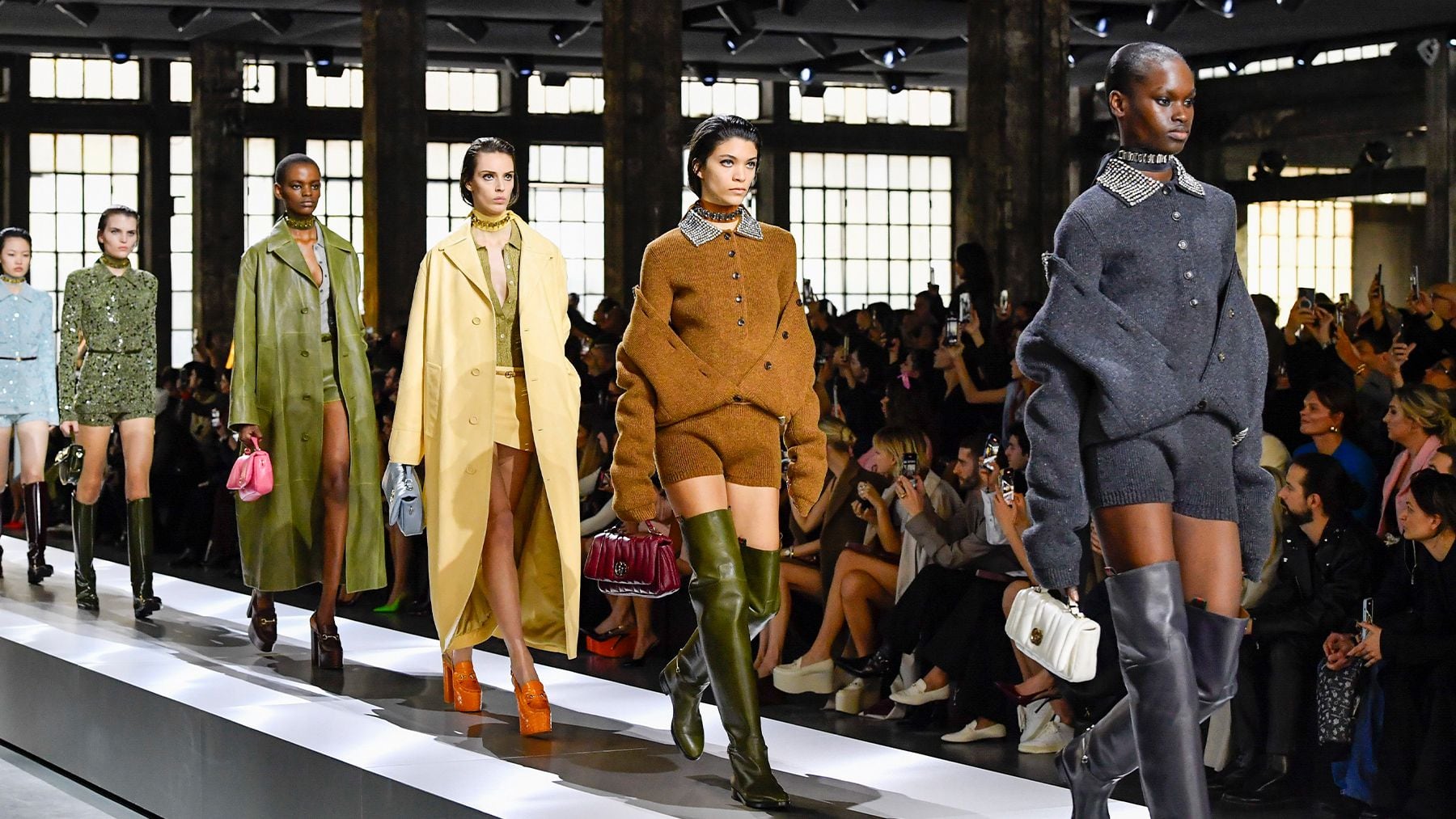
PARIS – Kering’s first-half profits are likely to drop by 40 to 45 percent, the French owner of Gucci and Saint Laurent said Tuesday. The group provided the guidance, which fell far below expectations, while releasing first-quarter sales numbers that confirmed a slowdown forecast by the company last month. Revenues fell 10 percent on a comparable basis.
Amid a difficult market in China and ongoing efforts to reposition Kering’s brands further upmarket, “the first half of the year is proving even tougher than we had expected,” chief financial officer Armelle Poulou said. “Regardless of the environment, we are investing in our brands, even if we are even more selective, more demanding in terms of return.”
Sales at the group’s largest and most profitable brand Gucci, the principal driver of the drop, fell 18 percent on a comparable basis, and 21 percent in reported figures. The brand, which has been working to revamp its brand image and strategy under a new designer and CEO, was “particularly impacted by a sharp decline in Asia-Pacific,” the company said.
The sales numbers were in line with a forecast the group released in late March. But the need for continued heavy investments, notably in marketing its brands, is likely to conspire with the significant loss of operating leverage at Gucci to weigh on profits more heavily than markets anticipated.
Kering’s share price plunged 12 percent following its March update. The new guidance on profit is “likely to prompt further material downward revisions,” Bernstein analyst Luca Solca said.
Market Slowdown
Sales at Yves Saint Laurent and Kering’s Other Houses division — which includes Balenciaga and Alexander McQueen — both fell by 6 percent, confirming that none of the group’s brands has been exempt from a broader slowdown in the luxury market, particularly among aspirational clients. The weakness was exacerbated by a push to further slash exposure to third-party retailers: wholesale was down 25 percent in both divisions.
Modest bright spots included leather house Bottega Veneta, which reported sales up 2 percent on a comparable basis, in line with fashion and leather goods sales at Kering rival LVMH. Retail sales at the Italian craft-driven brand rose 9 percent.
Balenciaga also showed signs that the worst was behind it after struggling to bounce back from a public relations scandal in late 2022. “At Balenciaga, trends improved in Western Europe and Japan, while the house achieved double-digit growth in North America,” Kering said. The turnaround in North America is significant, as the brand was hardest-hit in the region after one of its ad campaigns became a flashpoint in America’s culture wars.
Margins for Balenciaga will likely remain depressed as Kering continues to invest in fuelling the turnaround with initiatives such as a massive recent ad campaign for the brand’s “Rodeo” bag — a purse whose design appears to dialogue with Hermès’ ultra-classic Kelly Retourné, but is often styled by the brand with punk twists like garish keychains. Poulou referred to Rodeo as a sell-out success.
Gucci Under Pressure
Still, investors’ focus remains on Gucci, whose brand recognition and scale gives it the potential to transform Kering’s finances should it succeed in reigniting consumer interest.
Unfortunately, hopes of a quick turnaround at Italy’s biggest fashion house are fading: after three shows by Sabato de Sarno, the designer’s more subtle, sartorial take on Gucci has been more effective as a palate cleanser — helping to reset perceptions in the wake of former creative director Alessandro Michele’s off-kilter styling and over-the-top merchandising — than as a fresh driver of consumer excitement.
De Sarno’s designs have been “very well received” so far, but only hit stores from mid-February, Gucci said. The share of product that’s designed by De Sarno is expected to gradually ramp up over the course of the second and third quarters. Earlier deliveries were principally high-end runway pieces, but “coming in Q2 you have a broader assortment; more product in more stores. So it will be a better time to assess the reaction,” Poulou said.
Gucci recently hired Stefano Cantino, formerly Louis Vuitton’s director of communications and events, as deputy CEO in a bid to accelerate its turnaround.
Beyond the brand’s aesthetic revamp, Gucci is meeting resistance for its price positioning and distribution, notably in China. “All the weaknesses of the brand are exacerbated in China, both in terms of perception of the brand and the necessity of raising the exclusivity of distribution,” Poulou said. “The macroeconomic environment is making attractive either higher-end products where they consider it an investment, or at the lower end with more affordable products… Gucci is not in the sweet spot for positioning — it’s seen as not enough high-end, nor enough affordable. But this context can change rapidly.”
Improving an exclusive perception for Gucci and its Kering stablemates will require closing some of the group’s many outlets, which are typically well-stocked with items marked down 40 percent or more. That push is tricky to execute as Gucci seeks to transition to a new vision and as brands across the group work to better limit inventories, but the group pledged to close some outlets by the end of the year.

